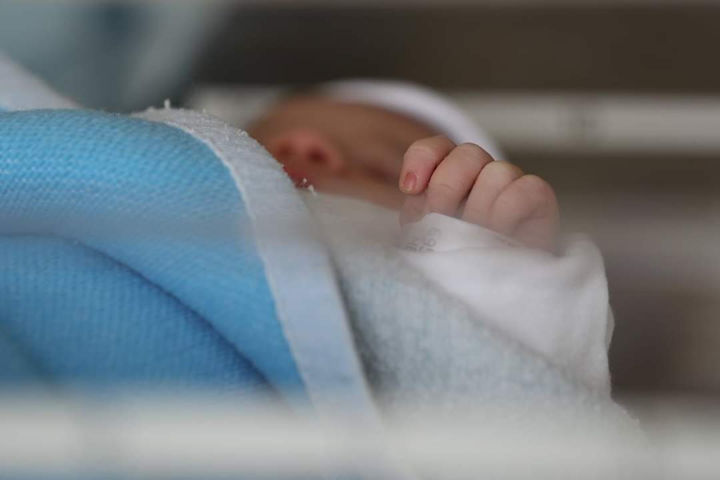Having a large medical team in an operating room is not a routine sight these days, but a multidisciplinary team recently came together to performa a rare surgical procedure to save the life of a birthing infant.
 The newborn baby shortly after birth. Photography: Courtesy of Rambam HCC.
The newborn baby shortly after birth. Photography: Courtesy of Rambam HCC.
A relatively rare surgical procedure was performed recently at Rambam Health Care Campus, when a team of hospital doctors performed an initiated caesarean birth on a pregnant woman in her 40s, a resident of the north, where her birthing baby remained attached to the umbilical cord and placenta for several minutes. The baby, which had been diagnosed with a facial anomaly, was expected to experience difficulty breathing independently following birth and subsequent separation from the placenta and umbilical cord, which are used as a supportive oxygen system while still in the womb.
In order to allow the baby to breathe well following the birth, the medical team prepared to perform a complex, gentle, and rare surgical procedure, during which they removed only the baby’s head from the uterus via the caesarean section, leaving her attached to the umbilical cord and the placenta, with the placenta remaining attached to the uterus as they cleared her airways and ensured that she breathing properly.
"This is a procedure that has been performed at Rambam several times in the past in very complicated cases," explains Professor Zeev Weiner, Director of the Division of Gynecology and Obstetrics at Rambam. "For such an operation, we actually operate on a timer where the baby is still connected to its uterine oxygen system, but the actual birth is already taking place. It is a critical factor and our window of opportunity exists as long as the placenta and umbilical cord continue to function in this way. In the short time available to us, we have been able to provide oxygen for the newborn, whose life is under threat, and successfully detach the baby from the mother's womb."
Such a complex procedure requires the collaboration of a multidisciplinary team of experts. These days, a limited but necessary team of specialists worked together in the operating room, including specialists in obstetrics, neonatal intensive care and childbirth, pediatric EEG, and pediatric anesthesia.
Following the successful operation, the newborn continued to receive treatment in Rambam’s Neonatal Intensive Care Unit, where she is stable and in good condition. Her condition continues to improve and she is now learning to take a bottle and nurse.

